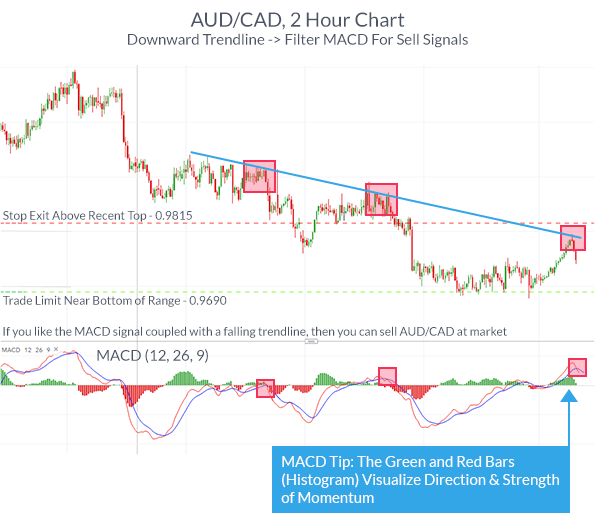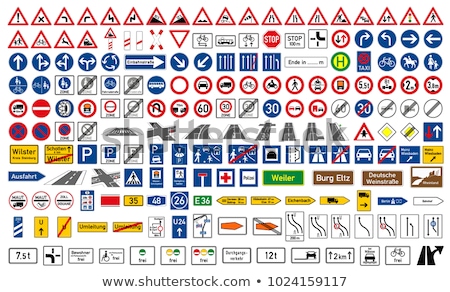PUT OPTION English meaning

Tastylive is not a licensed financial adviser, registered investment adviser, or a registered broker-dealer. Options, futures, and futures options are not suitable for all investors. Instead of buying options, investors can also engage in the business of selling the options for a profit. Put sellers sell options with the hope that they lose value so that they can benefit from the premiums received for the option. Once puts have been sold to a buyer, the seller has the obligation to buy the underlying stock or asset at the strike price if the option is exercised. The stock price must remain the same or increase above the strike price for the put seller to make a profit.
As a put seller, you assume the risk of 100 shares of long stock below the strike price of the contract you sell. Many people utilize short put contracts to obtain shares at a lower cost basis than the market is offering when the put contract is sold, and if the market has a huge rally, the profit is capped at the credit received. This may be seen as a negative compared to long stock owners, who realize a larger profit than a short put on a big rally in the stock price. If the right to convert a put to 100 short shares of a stock is exercised by a long put option buyer, the seller is obligated to make the exchange and “be put” 100 shares of long stock – this is called ‘assignment’. Many traders use short put options contracts to obtain 100 shares of stock at a lower cost basis than the market is offering right now.
If the underlying price is above the strike price, they may do nothing. This is because the option may expire at no value, and this allows them to keep the whole premium. But if the underlying price is approaching or dropping below the strike price, then to avoid a big loss, the option writer may simply buy the option back (which gets them out of the position). The profit or loss is the difference between the premium collected and the premium paid to get out of the position. To find out at which point a long put trade will be profitable – i.e. the breakeven price – you should deduct the debit paid from the strike price of the option.
Many people just trade the put contract itself though, and don’t end up taking shares at expiration. A put option is a derivative contract that lets the owner sell 100 shares of a particular underlying asset at a predetermined price (known as the strike price) on or before the expiration date. Put options give the owner the right, but not the obligation, to realize the theoretical equivalent of 100 shares of short stock below the strike price, less the extrinsic value premium paid for the contract itself. In contrast, short selling offers less profitability if the stock declines, but the trade becomes profitable as soon as the stock moves lower.
More meanings of put option
For example, with the same initial $300, a trader could short 10 shares of the stock or buy one put. They pay a premium that they will never get back, unless it is sold before it expires. Puts are traded on various underlying assets, which can include stocks, currencies, commodities, and indexes. The buyer of a put option may sell, or exercise, the underlying asset at a specified strike price. Put writing is an advanced option strategy meant for experienced traders and investors; strategies such as writing cash-secured puts also need a significant amount of capital. If you’re new to options and have limited capital, put writing would be a risky endeavor and not a recommended one.
How to Build a Plagiarism Detector Using Python – MUO – MakeUseOf
How to Build a Plagiarism Detector Using Python.
Posted: Wed, 09 Aug 2023 19:00:00 GMT [source]
Such put options allow life insurance policyholders the option to sell their policies for a specified price for a certain period of time. To calculate the profit, you subtract the market price from the strike price, giving you a profit of $5 per share. Since put options come in lots of 100 shares, you multiply that $5 per share profit by 100, which yields a gross profit of $500. After deducting the $100 premium, you would be left with a net profit of $400. If the price of ABC stock did fall, to a market price of $20, you could execute your right to sell the stock for the agreed strike price of $25 a share.
Put Option: What It Is, How It Works, and How to Trade Them
Put options are a type of option that increases in value as a stock falls. A put allows the owner to lock in a predetermined price to sell a specific stock, while put sellers agree to buy the stock at that price. The appeal of puts is that they can appreciate quickly on a small move in the stock price, and that feature makes them a favorite for traders who are looking to make big gains quickly.
You should consider whether you understand how this product works, and whether you can afford to take the high risk of losing your money. The appeal of selling puts is that you receive cash upfront and may not ever have to buy the stock at the strike price. But you won’t be able to multiply your money as you would by buying puts. As a put seller, your gain is capped at the premium you receive upfront.
What is the strike price of an option?
Put sellers make a bullish bet on the underlying stock and/or want to generate income. XYZ stock is trading at $50 per share, and for a $5 premium, an investor can purchase a put option with a $50 strike price expiring in six months. Each options contract represents 100 shares, so 1 put contract costs $500. The investor has $500 in cash, allowing either the purchase of one put contract or shorting 10 shares of the $50 XYZ stock. For a put buyer, if the market price of the underlying stock moves in your favor, you can elect to “exercise” the put option or sell the underlying stock at the strike price.
Discover how to trade with IG Academy, using our series of interactive courses, webinars and seminars. In financial markets, an index is an indicator of the overall change in the values of some or… To learn more about options, check out our free online course on the related topic.
- But if the stock’s market price is above the option’s strike price at the end of expiration day, the option expires worthless, and the owner’s loss is limited to the premium (fee) paid for it (the writer’s profit).
- The most widely traded put options are on stocks/equities, but they are traded on many other instruments such as interest rates (see interest rate floor) or commodities.
- Option trading levels range from Level 1 to Level 5, with Level 5 being the most complex.
- The put owner can also sell the contract instead of taking short shares to close the position – if the put is worth more than what the trader bought it for up front, the transaction results in a profit.
This means call and put traders have opposite incentives — call buyers and put sellers are bullish, while put buyers and call sellers are bearish. The seller has the obligation to purchase the asset at the strike/offer price if the option owner exercises their put option. After doing some research let’s say that you have concluded that shares of ABC company will fall below $100 per share which is where our fictional company is currently trading. By purchasing a put option for $5, you now have the right to sell 100 shares at $100 per share.
Put contract sellers want the stock price to move up, or at least not move ITM, and realize max the profit of the credit received up front if the contract expires worthless. Each contract represents 100 shares, so for every $1 decrease in the stock below the strike price, the option’s cost to define put option the seller increases by $100. The break-even point occurs at $45 per share, or the strike price minus the premium received. The put seller’s maximum profit is capped at $5 premium per share, or $500 total. If the stock remains above $50 per share, the put seller keeps the entire premium.
Example—How Does a Put Option Work?
Typically investors keep enough cash, or at least enough margin capacity, in their account to cover the cost of stock, if the stock is put to them. If the stock falls far enough in value you will receive a margin call, requiring you to put more cash in your account. In general, the value of a put option decreases as its time to expiration approaches due to time decay because the probability of the stock falling below the specified strike price decreases.

So, you need Company XYZ’s stock price ($1,000) to remain above the strike price of $900 at expiration to realize a profit. If the stock, however, doesn’t fall below the $900 strike, the value of the put can still increase considerably if there’s a sharp bearish move in the underlying’s price with a lot of time left to expiration. Assuming that this swift decrease moved the stock price past the put strike to $880, you could sell the contract for at least $20 or $2,000 of intrinsic value, plus any remaining extrinsic value in the contract itself. Let’s say there’s also $2,500 of extrinsic value remaining in the contract. This would result in a profit of $4,000 (after subtracting your cost to enter the put contract). If you held this to expiration, you would lose all the extrinsic value, and if the stock is still at $880, you would realize a profit of $1,500 if you sold the contract for its intrinsic value of $2,000.
Buying a put vs. shorting example
IG International Limited is part of the IG Group and its ultimate parent company is IG Group Holdings Plc. IG International Limited receives services from other members of the IG Group including IG Markets Limited. The information in this site does not contain (and should not be construed as containing) investment advice or an investment recommendation, or an offer of or solicitation for transaction in any financial instrument. IG accepts no responsibility for any use that may be made of these comments and for any consequences that result.

This predetermined price at which the buyer of the put option can sell the underlying security is called the strike price. On the other hand, short put positions make money when the contract expires OTM and worthless – the premium received for selling the contract up front is the profit. In all three ways of closing a put option, potential profits or losses are dependent on the underlying’s price when the closing transaction takes place (or expiry in the first case). Choosing the third option above means that the put buyer would have to convert the option into 100 short shares of stock. Except for ITM options with very little extrinsic value, assignment is generally uncommon – the first two options above are much more popular. With stocks, each put contract represents 100 shares of the underlying security.
On the other hand, if Liam thought the price would rise, he would sell his put option. Put options are complicated and could be costly for beginner traders who aren’t aware of the risks. This makes it important for traders to have a risk management strategy in place before they start trading.
The Logic of Not-self – Lions Roar – Lion’s Roar
The Logic of Not-self – Lions Roar.
Posted: Tue, 08 Aug 2023 13:52:56 GMT [source]
We follow strict guidelines to ensure that our editorial content is not influenced by advertisers. Our editorial team receives no direct compensation from advertisers, and our content is thoroughly fact-checked to ensure accuracy. So, whether you’re reading an article or a review, you can trust that you’re getting credible and dependable information. A put can be contrasted with a call option, which gives the holder to buy the underlying at a specified price on or before expiration. » Buying and selling put options can be used as part of more complex option strategies. This may influence which products we review and write about (and where those products appear on the site), but it in no way affects our recommendations or advice, which are grounded in thousands of hours of research.
What if the investor did not own the SPY units, and the put option was purchased purely as a speculative trade? In this case, exercising the put option would result in a short sale of 100 SPY units at the $425 strike price. The investor could then buy back the 100 SPY units at the current market price of $415 to close out the short position. A seller of a put option assumes the opposite speculation of the put buyer. Therefore, they want the stock price to remain above the put strike, in which case they would keep the premium collected upfront for selling the option.

